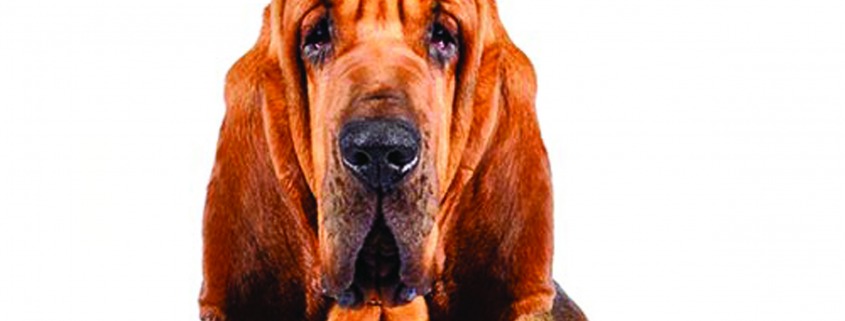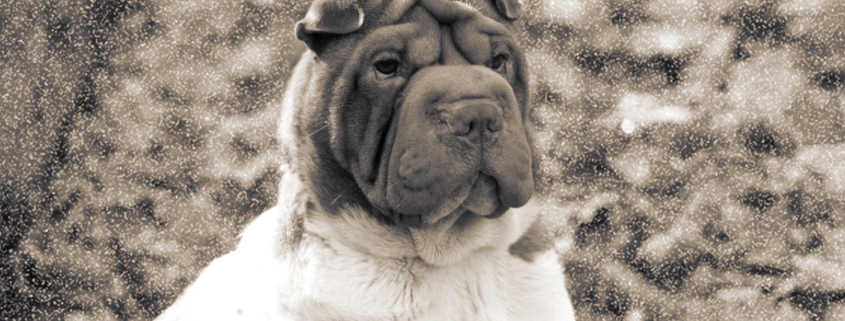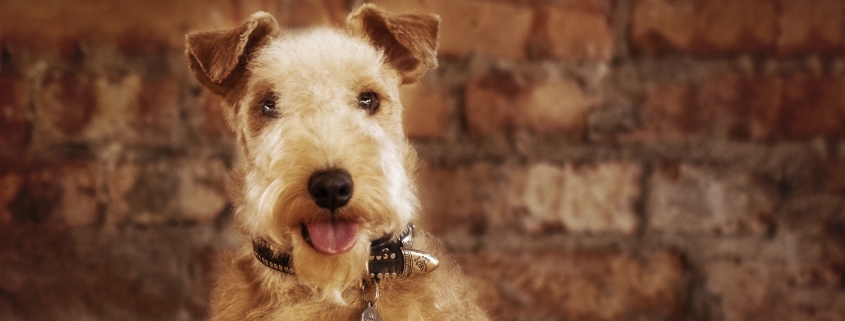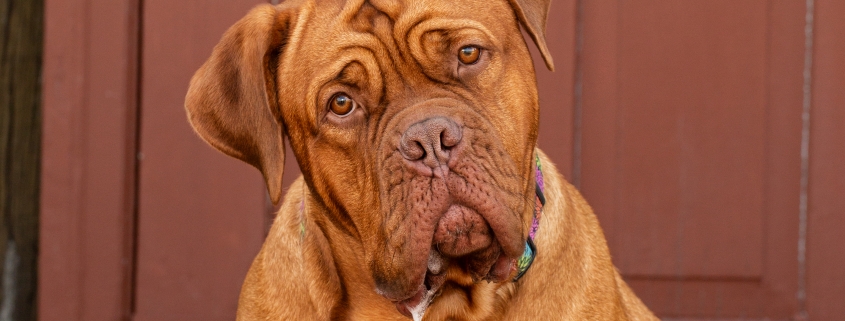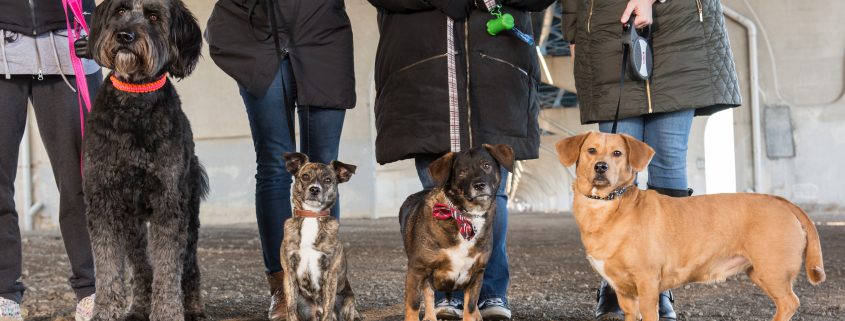BY NASTASSIA PUTZ
“If you are looking for a breed of dog that is extremely stubborn, kind of gross at times—because of their ability to cover your wall mounted TV in slobber—then look no further,” says breeder Jennifer Graham of Honeysuckle Hounds. “[Bloodhounds] will offer you endless love and affection for many years to come in addition to becoming your very own personal comedian.”
Bloodhounds are notable for being friendly, inquisitive and independent companions. According to the AKC, their most famous features are their long, wrinkled faces with loose skin; huge, drooping ears; and warm, deep-set eyes. This gives them a complete expression of solemn dignity.
First released in June 1955, the Walt Disney animated classic “Lady and The Tramp” introduced many lovable canine characters to children and among them was a very dignified-looking Bloodhound named Trusty—the same name gifted to our spring/summer cover dog. Coincidence? I think not.
Owner Beware
As a first-time Bloodhound owner, Brigid Boyle encountered her “Trusty” at her daughter Erin Hennen’s grooming shop—Fancy Pants Pet Salon—in Wauwatosa in 2020. At the time he was wearing a cast on his leg because he had injured himself from playing with his littermates. Boyle felt bad for this little pup, and so she decided to open up her heart and home to him.
“One thing I do know is that they DROOL A LOT,” emphasizes Boyle. After owning Irish Wolfhounds for 20 years, a Bloodhound is quite a new and entertaining experience for her. Note: Carry a towel (or several) wherever you go. “Every day he makes me laugh at something he has done or reacted to.” So be prepared. She continues, “Their only drawback is that they can wrap you around their paw with those sad eyes and make you want to apologize for correcting them.” This makes obedience training a challenge especially because they are stubborn and have a mind of their own, notes Boyle.
To Train Or Not To Train?
That’s not even a question.
As pack dogs, Bloodhounds enjoy the company of other dogs and kids. They are easygoing and faithful, but their superior noses can sometimes lead them down a rabbit hole, figuratively speaking. The AKC recommends a strong leash and long walks in places where they can enjoy sniffing around.
Graham says owners should avoid off-leash training with hounds because “their amazing sense of smell and drive has the ability to lead them miles from home without rest.” This can obviously put them in harm’s way. On the less serious side of things, this can put your family dinners at risk too. She quips, “You will no longer need to just hide your sweets from your children or significant other but also from your hound.” Note: Above ground fences (6 feet or higher) are definitely recommended, and don’t forget to watch out for digging.
Bloodhounds can also become set in their ways; so training from an early age on is best. Graham has found that hounds are slow to mature mentally and emotionally, which makes them a challenge throughout their youth and adolescent years.
“I have always told my puppy parents if they can make it through the first two years of life, they’re golden.”
Why Bloodhounds?
Graham was born and raised in Gladstone, Michigan and has been around hounds her entire life. She finds their love and devotion astounding and can’t imagine her life without one (or several). Coming from a family fond of hunting, Graham says that every “yooper” knows that all good hunters need a good hound. She also doesn’t know if breeder is the correct terminology for what she does. “I sought out two equally magical hounds from the opposite ends of the country and helped to create and amazing litter of 11 bouncing Bloodhounds,” she says. “To some, that may be considered a breeder, but I see myself as merely part of the camera crew to an upcoming blockbuster hit.”
There are definitely pros and cons to every breed of dog. For the Bloodhound, the sense of smell can be a little bit of both. As a scent hound, that hereditary gift is constantly in overdrive making them ideal candidates for hunting and for law enforcement use. They won’t quit until the job is done.
Trusty still goes with Boyle to the grooming shop (Fancy Pants) where they first met each day and fancies himself as the “official greeter.” And as such, Hennen (shop owner) says Trusty is just the sweetest and goofiest pup ever. “Every bone in his body is filled with love.” She continues, “He’s clueless and sweet—the best combo!”

